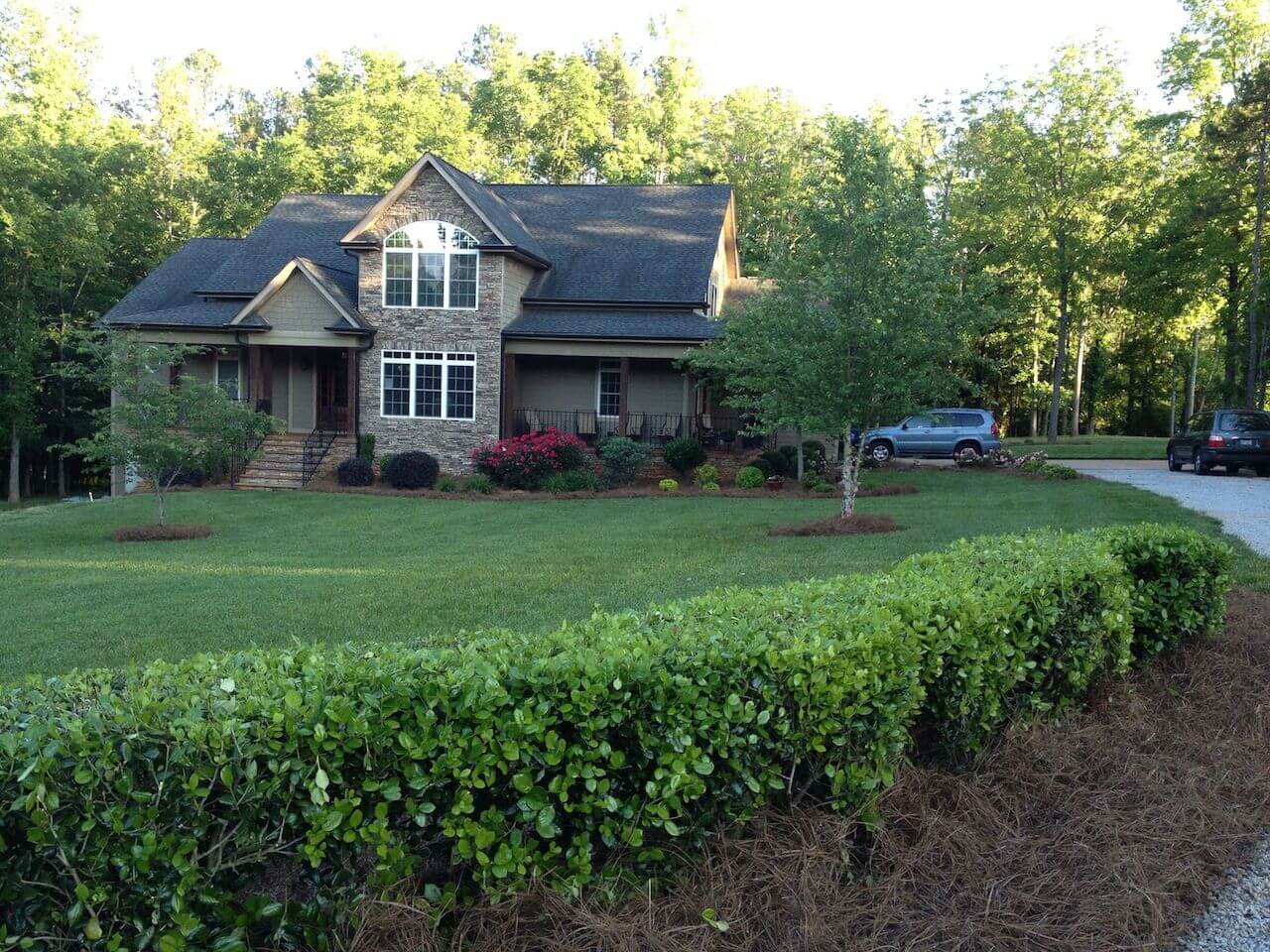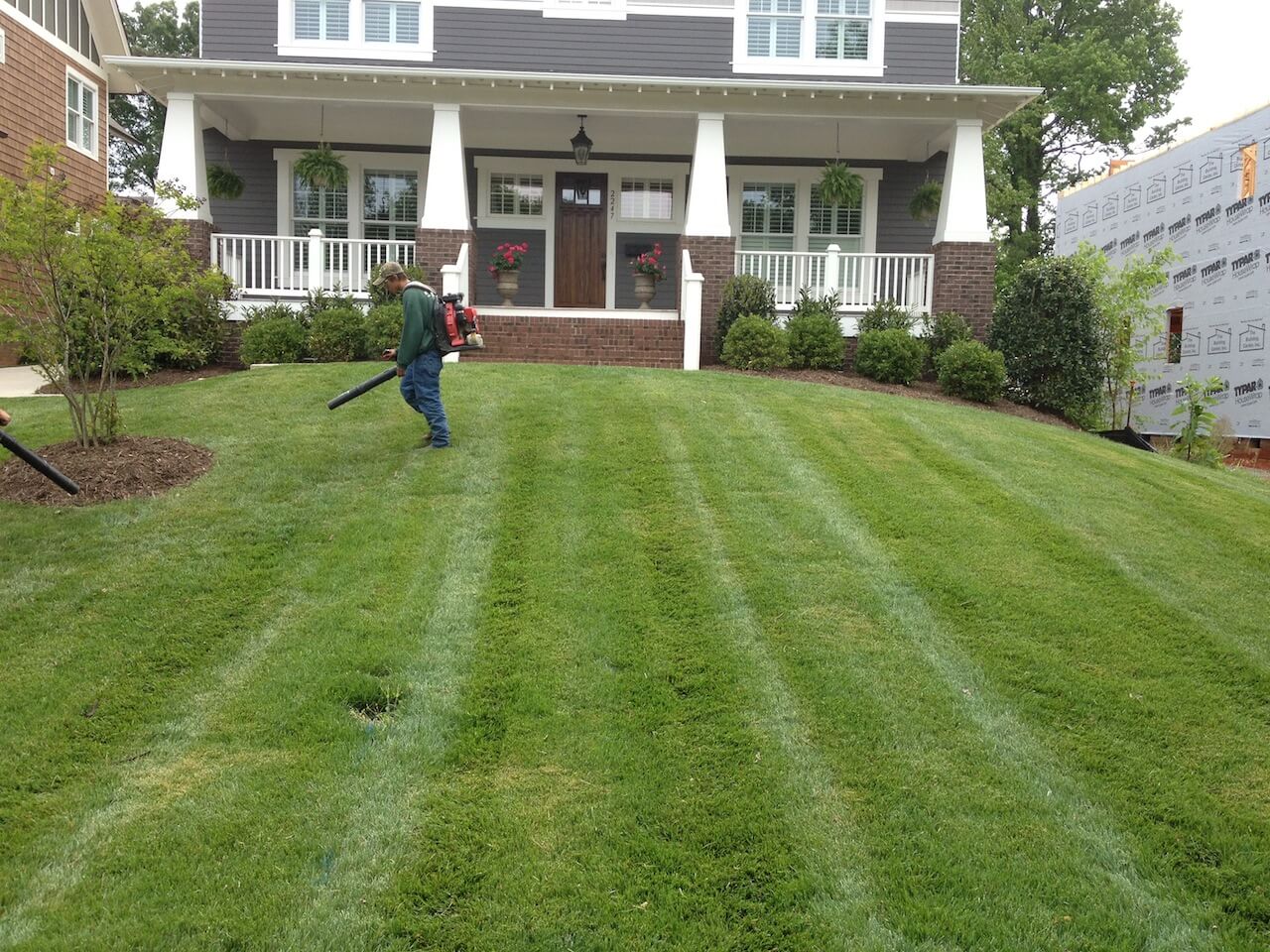Healthy lawns are the foundation of the vegetative showpieces that typically feature flowers, shrubs and trees. Performance Lawn and Landscape has the experience and the equipment to fill all your Charlotte landscaping needs. Some of our basic services include: Tree & Shrub Installation includes both planting and transplanting, Planting Area Preparation includes amending the soil and tilling, & Seasonal Flowers are the crowning glory of many landscape designed residences.
Sod Landscape Designer
Where is Sod best used?
Sod can be installed practically anywhere even where seeding is impossible or too costly. Sod is often used to stop soil erosion and water pollution on slopes where rain would wash away both seed and soil. Sod is available in a variety of grass blends to suit various needs such as climate, amount of usage, sun and shade conditions.
Can Sod Withstand Heavy Usage?
Certainly Sod establishes itself quickly. In a few weeks, it’s ready for full use. It creates the perfect surface for lawn games and family outdoor living. with today’s various blends of hardy grasses, sod is chosen for parks, golf courses, athletic fields, as well as residential homes and business parks.
When can Sod be Installed?
Sod has revolutionized the lawn care business! Now you can install a sod lawn anytime during the year when the ground can be tilled. There is no need to wait for the “right” season to put in your lawn.
Is Sod a good investment?
Yes – it’s the only way to go – from bare, soil to lush, green lawn in just hours. Yet, it’s relatively inexpensive to use. In the few hours it takes to install your sod lawn, your property value increases significantly and even more in aesthetic value.
How will Sod affect our environment?
With today’s ecological concerns, many more people are considering sod for its environmental benefits. Sod cools and cleans the atmosphere by reflecting the sun’s heat and absorbing noises, carbon dioxide and other harmful pollutants. It releases valuable oxygen and moisture into the air we breath. As it grows, sod silently contributes to a healthier environment.
Landscape Designer Services
Ask About Our 1 Year Service Agreement
Sod Installation & Care Guide
For best results, rototill or spade the area to be sodded to a depth of 4 to 6 inches. Eliminate drainage problems by sloping soil away from foundations, etc. Soil test your lawn with the assistance of qualified service in your area. The soil test results will tell you the amounts and type of fertilizer needed. Then rake in fertilizer, lime, peat, and compost as needed to a depth of 3 to 4 inches. Rake and smooth the soil, removing rocks, roots and large clods. Be sure the surface is leveled well as the sod will not “fill in” the low spots. Along sidewalks or driveways we recommend lowering the grade by 1″.
Landscape Designer Maintenance Tips
Mowing
Your new living carpet generally needs mowing 6-7 days after installation. Mow often, generally removing no more than 1/3″ of the grass height with each mowing. Always remember to keep you mower blade sharp. Mow when grass height reaches 3″ Set your mower a cutting height of 2-3″ The recommended mowing height will promote deep rooting to better survive dry periods.
Aeration
To promote deep rooting and reduce soil compaction created from new construction, we highly recommend aerating your lawn in the fall and spring when the ground is easy to penetrate. A soil plug of at least 1/.2″ by 3-4″ deep should be removed, leaving a series of holes approximately 2-3″ apart. If you are using a wheel type aerator you will have to go over the lawn several times to get the density of holes needed to keep your lawn healthy.
Fertilization
Fertilize your newly sodded lawn 30-45 days after installation. Always use a slow release formulation of plant food with a 3:1:1 ratio, such as 12-4-4 or similar formulations. Fertilize moderately applying 3-4 Ibs. of nitrogen per 1,000 Sq.Ft. per year. Avoid heavy fertilization in spring (April) wait until June to fertilize. Fertilize 3-4 times a year and apply most of the fertilizer in September & October. Spread fertilizer evenly to avoid streaking and burns. Apply when the grass is dry and water it in. Please note that our Wisconsin Green Fescue Mix and Tall Fescue Kentucky Bluegrass Mix only requires 1/2 of the above recommendations.
Weed Control
The best weed control is a healthy lawn. Keeping turf vigorous does not allow weeds to get started as easily. When weeds become a problem, hand weeding or herbicides are suggested. Crabgrass is an annual that develops from the seed produced the previous year. To control it, apply a pre-emergent herbicide in April, before the crabgrass starts to grow. Apply herbicides for broadleaf weeds (dandelions, plantain, etc.) in May or September. Carefully follow the manufacturer’s directions listed on the containers.
Trees & Shrubs – Landscape Design
Planting trees and shrubs requires more than just digging a hole and putting them is the ground. Many times I have seen landscaping companies and home owners install new trees and shrubs only to watch some of them die from incorrect planting. This is not only a waste of time, but more important a loss of money. You don’t have to be a professional horticulturist to be successful and have the landscape designed area you desire. For healthy trees and shrubs it all starts at the beginning with a good foundation, by following the right planting tips.
Before purchasing, selection is very important . Make sure that you only choose trees and shrubs that are adaptable to each location. Light requirements and mature size, need to be considered. Quality is also important, so shop at a reputable garden center or nursery. For shrubs, pick ones that are not “Broken”, “Cracked”, or “Scared”. For trees, choose ones that are “Upright” and full of Branches (Not Thin). Look at the foliage. If they are Dropping their Leaves or don’t look Healthy with Droopy Leaves. If they are, Don’t Buy Them!





